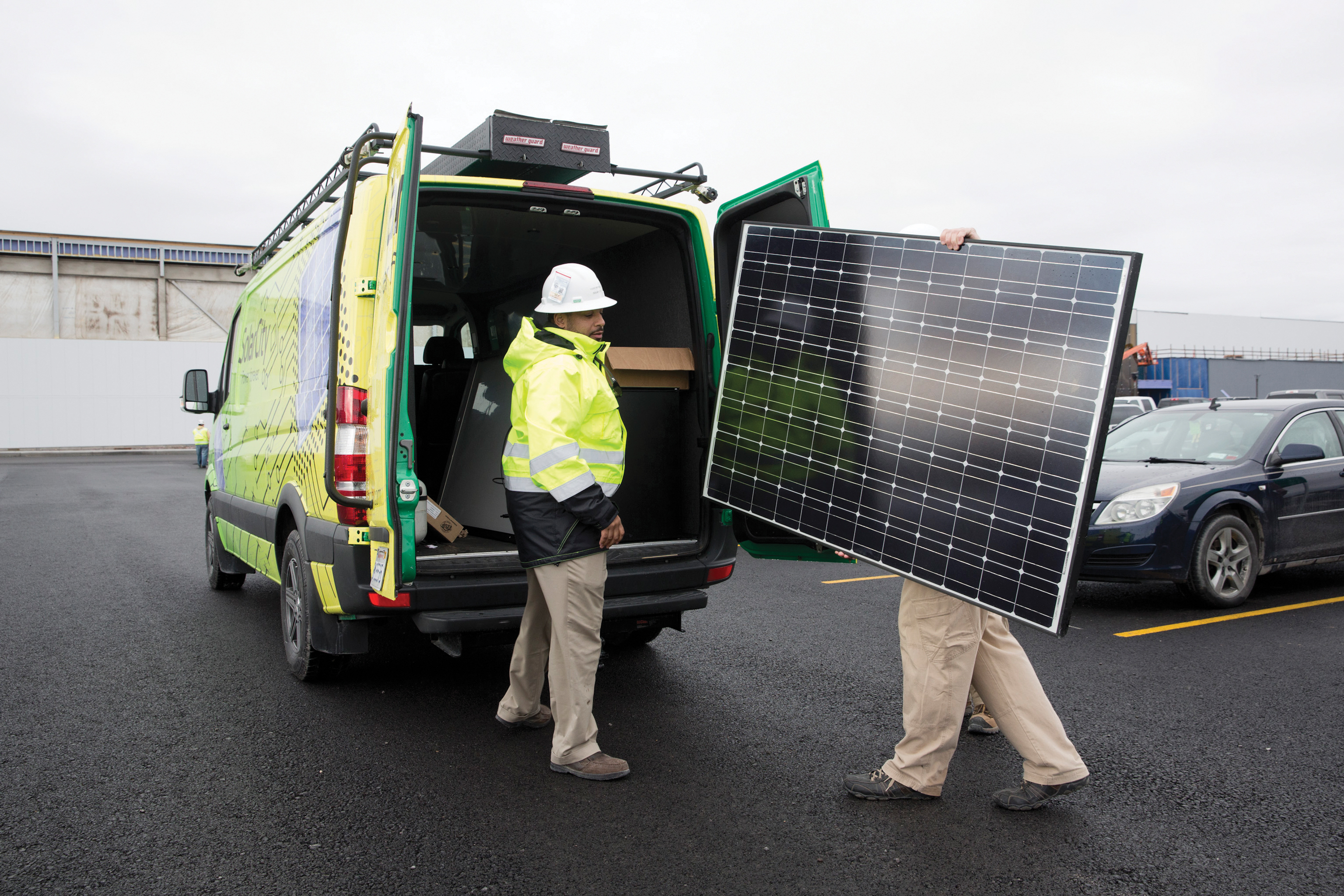
bolstered through federal solar subsidies and “net metering,” the guidelines that permit house owners to promote excess strength lower back to the grid at retail prices in lots of states, SolarCity is already leading the way in making residential structures financially appealing to many families, spurring an explosion within the reputation of the rooftop panels. The drop in set up fees ought to make residential sun even extra popular.
“right now we can sell you strength in 14 states at a charge decrease than what you’re presently paying the utility,” says Rive. The Buffalo manufacturing unit, he provides, “units us up for a destiny wherein sun plus batteries is less expensive than fossil fuels.”
Key to the enterprise’s aims is a technology it obtained when it offered a small sun organization referred to as Silevo in 2014. That technology, which allows it to make panels which might be exceptionally green at changing sunlight into power, strains its origins to the Australian solar power pioneer Martin inexperienced within the past due 1970s. It combines a wellknown crystalline-silicon sun cell with elements of a skinny-film cellular, together with a layer of a semiconductor oxide. closing October, SolarCity introduced that take a look at panels made at a small facility in Fremont, California, had tested at simply over 22 percentage performance. nowadays’s commodity silicon-based totally sun panels have efficiencies of among 16 and 18 percentage. SolarCity competitor SunPower previously led the market with cells which could reach 21.5 percentage.

pinnacle image: The huge sun production facility, proven above in past due December, is scheduled to start full-scale manufacturing sometime subsequent year.
Above: The gigafactory covers some 27 acres, making it the largest solar manufacturing facility in North the usa.
performance matters due to the fact the panels themselves represent most effective 15 to 20 percentage of the value of the entire installation. a great deal of the relaxation comes in what’s known as balance-of-device expenses: inverters to hook up with the grid, materials to house the array, nuts and bolts to connect it to the roof, the exertions to put in it, and so forth. SolarCity’s set up, says the organization, would require one-1/3 fewer panels to supply the equal amount of energy as conventional installations. “Fewer panels method fewer bits and pieces, less cord, much less days on the roof to install,” says Francis O’Sullivan, the director of research and analysis at the MIT energy Initiative.
SolarCity uses a deposition manufacturing procedure that reduces the wide variety of steps required to make the cells from two dozen or greater to simply six. It additionally replaces silver, one of the most steeply-priced factors of conventional solar cells, with less expensive copper.
however the distinction in performance between solar panels produced in a small facility like SolarCity’s Fremont plant and in a huge manufacturing unit just like the Buffalo one might be significant. And scaling up production could be especially complicated given -SolarCity’s lack of producing experience. Rive acknowledges that there could be “small dangers around the actual time line” in getting the products popping out of Buffalo to match the efficiencies accomplished at small scale. Already, SolarCity has pushed returned the goal date for complete production from the Buffalo manufacturing facility from the first quarter of 2017 to later in the 12 months.
but the real chance lies in the fast boost of solar technology: a record-setting panel today would possibly look quite inefficient 3 or five years down the road. soon after SolarCity showed off its high-performance panels ultimate October, Panasonic topped its rival by way of claiming that its new panels could attain efficiencies of 22.5 percent. in the meantime, efficiencies within the lab are even higher: researchers have made distinguished sun-mobile substances with efficiencies of as much as 40 percent. “I think that within 10 years, most producers may be generating panels over 20 percent performance, with the first-rate industrial panels achieving over 23 percentage,” inexperienced says.
O’Sullivan adds: “For now, SolarCity is shifting the boat out as some distance as it may with, generically speaking, current generation. but we’re starting to approach a choke point for the economics of any silicon-based totally era”—along with the new cells SolarCity is bringing on-line. destiny advances, he says, will entail plenty lighter, flexible panels that offer a lot higher efficiencies and are even inexpensive to put in—and therefore produce power at a much lower fee.
At that factor, the sun panels coming out of the gigafactory might also seem as conventional as commodity panels produced in China today. it's miles, but, SolarCity’s willingness to tackle such dangers that makes the Buffalo facility so ambitious. over the past 10 years, the Silicon Valley organisation has made residential solar a famous preference for many customers via smart advertising and marketing and appealing financing. Now it wants to rework sun production. whether or not SolarCity succeeds or fails, it's far once again pushing the possibilities of solar power.



No comments:
Post a Comment